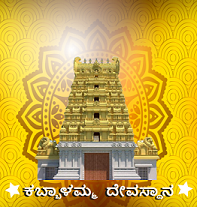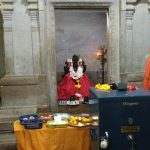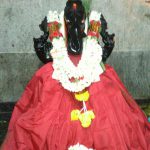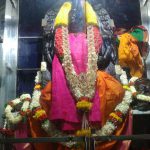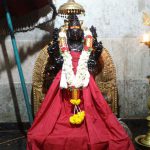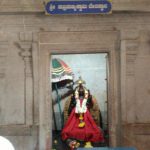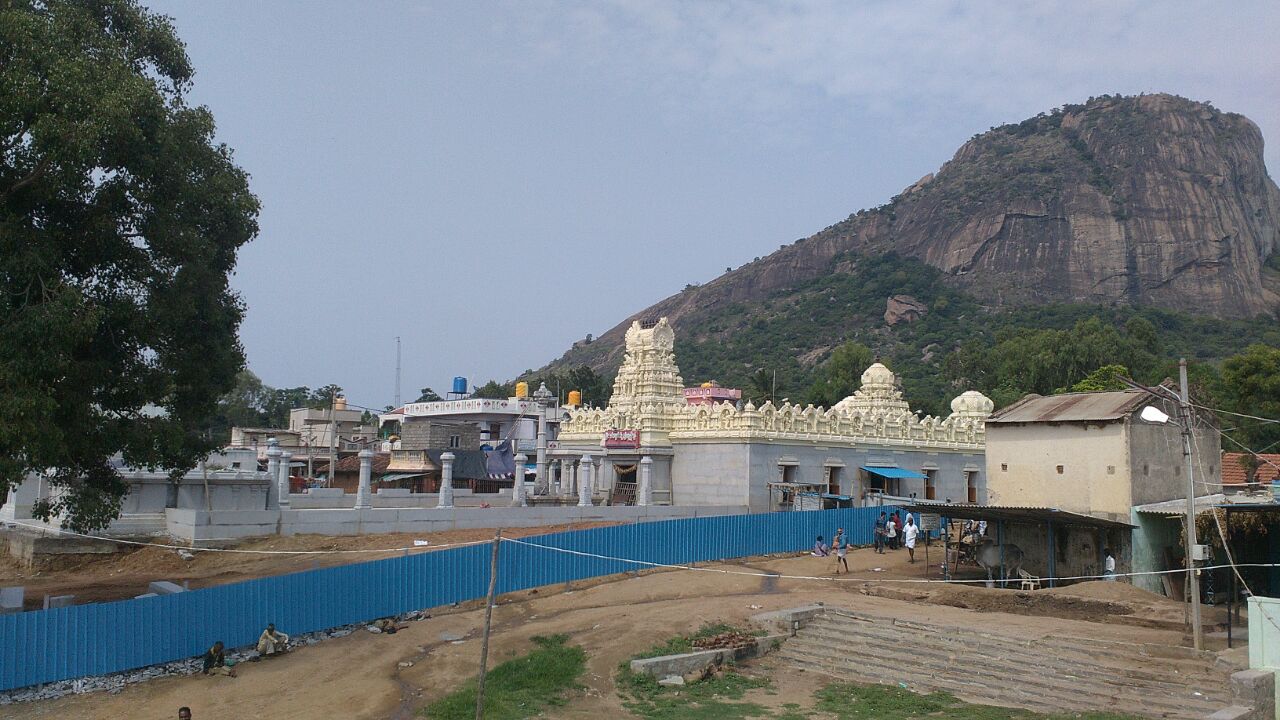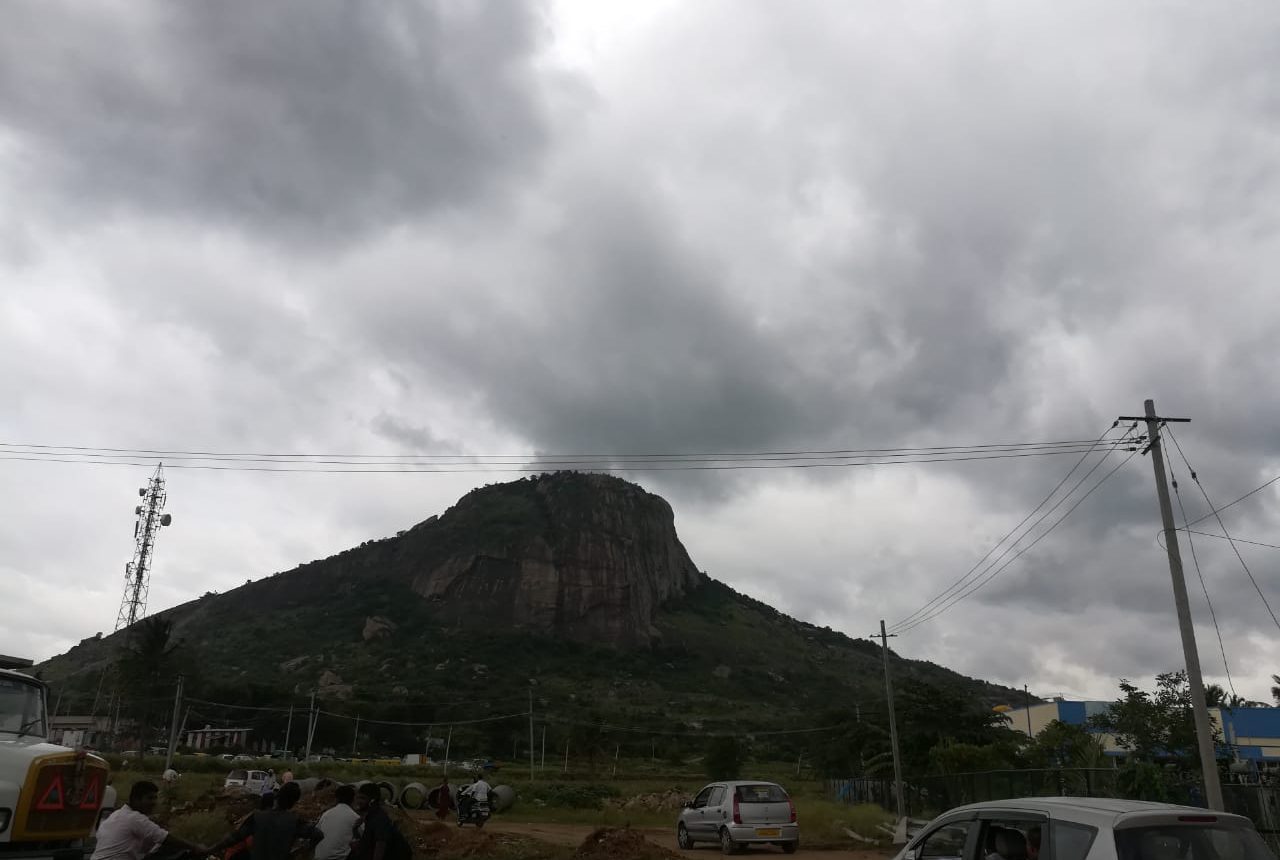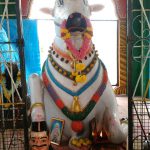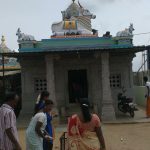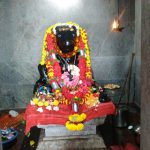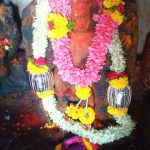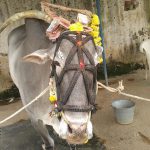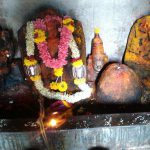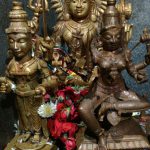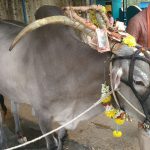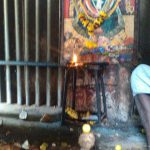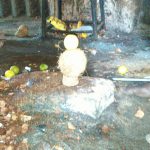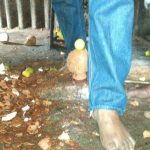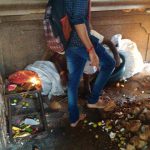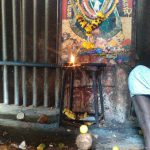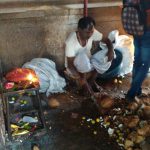
Shree Kabbalamma Temple
KABBALU PUNYAKSHETRA
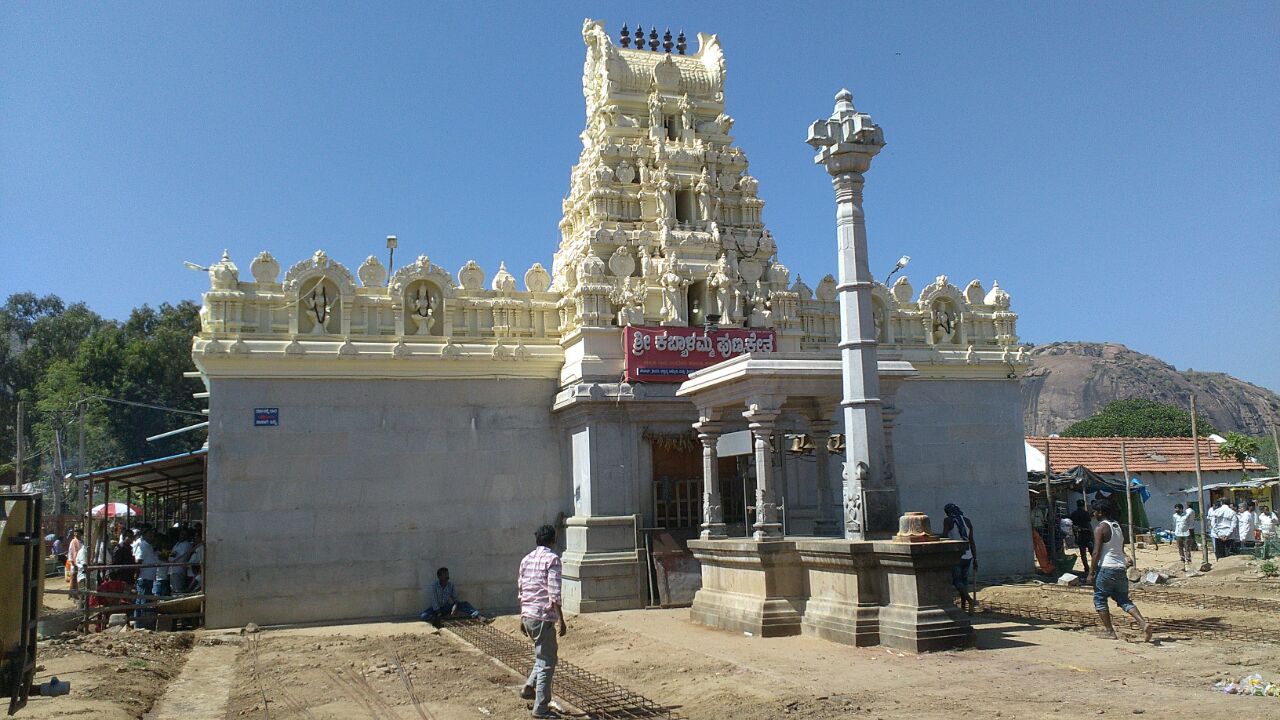
Shree Kabbalamma Devasthan
The main temple is where Shree Kabbalamma vigraha is being worshiped. Pilgrims come every year to worship in lakhs.
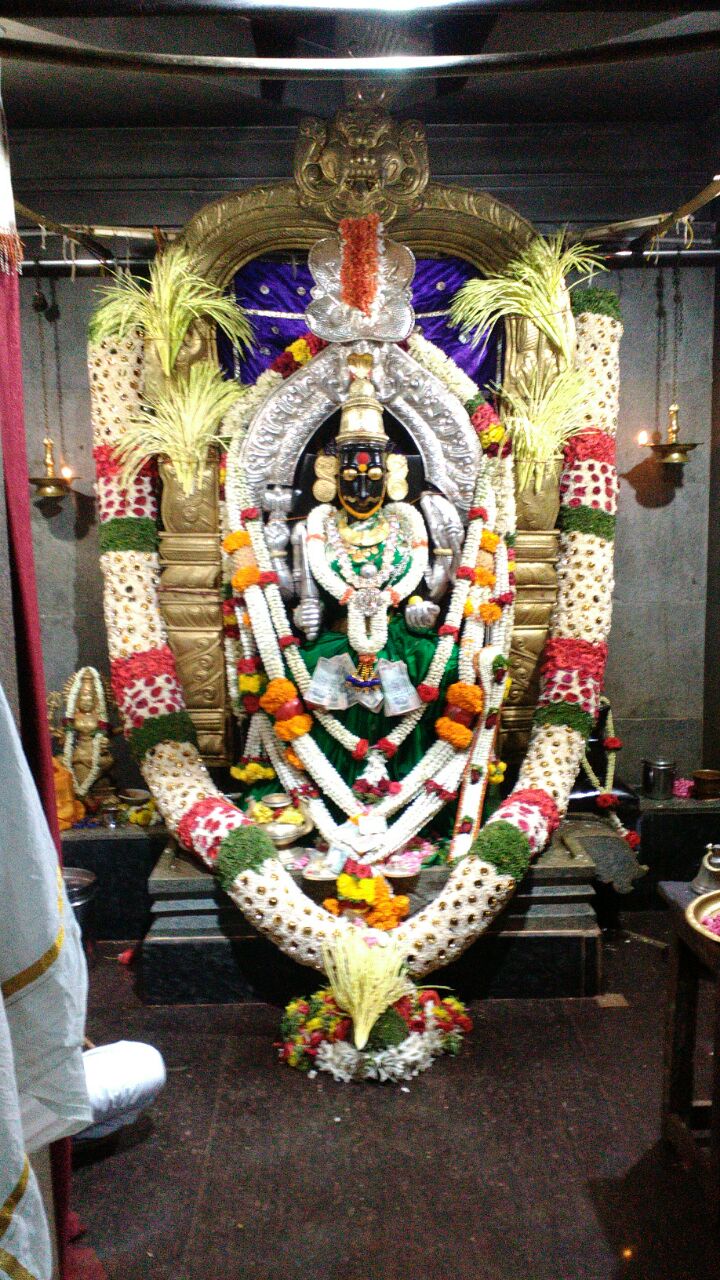
SHREE KABBALAMMA DEVI OF KABBALU KSHETRA
After the nirvana of Mahavira, many rishis like Gouthamaganadhara became Jain gurus. Among them, when Bhadrabahuswamy was in Ujjain, he forecast that the country will be ravished by a famine for twelve years. Due to the fear of this anticipated disaster, the whole Jain association migrated from uttarapatha to dakshinapatha. They gradually came to the country of hundreds of folk people and gramas having Janadhanakanakasasya, Gomahishajaavikula, living happily and peacefully, says the history. Such migrated Jain rishis went to Katavapra (Shravanabelgola), Thippuru (Maddur Taluk) and Nimba grama (Channapatna Taluk), Gommatagiri (Mysore Taluk), Kanakagiri (Chamarajanagara Taluk) etc. Likewise, they came to Kabbalu Durga (Kanakapura Taluk) started their meditation according to their cadres. Seeing their difficulties in scaling the Kabbalu Durga, at the time when Jain religion was developing, i.e. during BC 900 to 1100, Ganga Raja or his children hike it and have got the steps carved at the cliff’s steep tip. They also built a water pond and small shelter on top for these Jain rishis. Subsequently, during the time, after the Hoysala period, a fort was built to this Kabbalu Durga.
SHREE KABBALAMMA DEVI OF KABBALU KSHETRA
Kabbalu grama is located in Sathanuru Hobli, Kanakapura Taluk, in Ramanagara District (Old Bangalore Rural District). This grama which is a flat area surrounded by hills and hillocks, is identified as Kabbalu Kuli. Kabbalu, Kamsagara, Attihalli, Hosalli, Vaderahalligerahalli, Arekattedoddi, Dalimba and such gramas are located in this Kabbalu Kuli. As a royal mukuta, Kabbalu Durga, Gerallibetta, Thailurukallu and Kuruchi hills are adorning the Kabbalu Kuli. Durga which is in the west of Kabbalu grama is quite tall, and the scenery visible from the top is magnificent. At the foot of the Durga towards east, Kabbalu grama is located. Though Hale Kabbalu and Hosa Kabbalu are located adjacent to each other, the Temple is located in Hale Kabbalu. The hill range is called Bhimana Bettagalu.
Kabbalu grama and its godess Shri.Kabbalamma/Kaalikadevi face the east and the Durga is in the west. Being in the shape of a conch, and is at a height of 1069 meters from sea level has historical prominence. In the north-east, there is a pond with stairs and a lake beside which is called Choulikatte. On the south of the Temple, the Kabbalu grama has developed and in the north, there is a vacant land belonging to the Temple. All people of all communities live here, with agriculture as their main occupation. Besides growing ragi, paddy, avare, huruli, groundnut, now many people are growing hippunerale soppu and are in busy in silk cocoons production.
Kabbalu Durga is historically known as Kabba Halu from the periods of Ganga and Hoysala dynasties. In the foothills grama, the grama godess, Kaalikadevi, in the name of Kabbalamma, has the temple. In the inscriptions of the Vijayanagar rule, Shri.Kabbalamma appears as Kaalikadevi. This temple is Vijayanagar style of simple architecture with square pillars without any carving. Sanctum tip is constructed with bricks and mortar which is of recent type. On the east of the Temple, there is a Bhairava Gudi, which has two faces called Kenchanna and Kariyanna, and has a compound and a front lounge. On the top of the Durga an ancient Bhimeswara Gudi, a pond and grain storage, are there. At the middle of the Durga a cave where an idol of Srinivasa Murthy is established, has evolved into a small temple. This small temple has on its sides two small water ponds. The Durga is enveloped by a protective fort.
The region at the base of the Durga is called Koteshwara Katte, entrance with four stone walls, Gollara Bagilu, a pond with stairs like a Kaagadi are situated. On top of the Durga, among the weather-affected remains of monuments, a ragi storage, on the south a corner to push down the dead body, are all of architectural importances. On the western fall, remains of a place said to belong to Paleyagara can be seen. On the south-west of these remains, foundation stones of Shri.Kabbalamma are found broken. On the north-west of the remains of this palace, there is a weapons storage house.
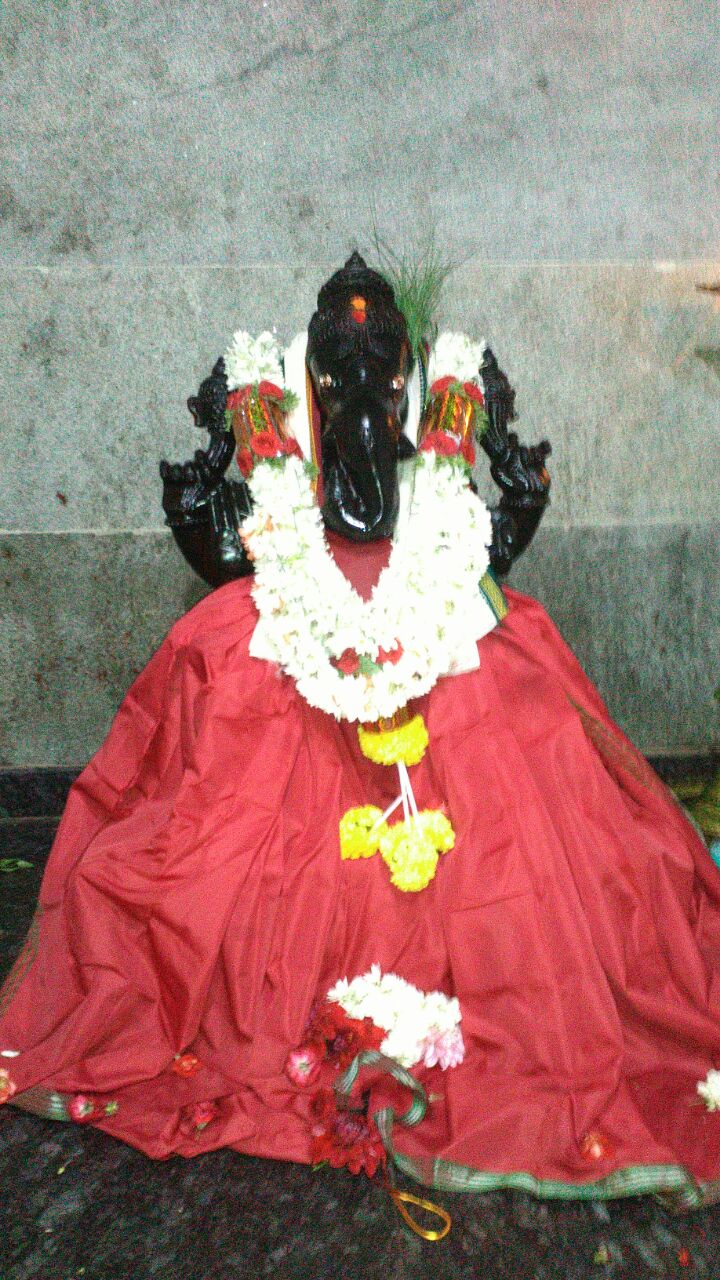
Sri Ganapathi Devasthana
Within the main temple, Lord Ganesh is worshiped. Sri Ganapthi Devasthana is located left to Sree Kabbalamma inside the temple
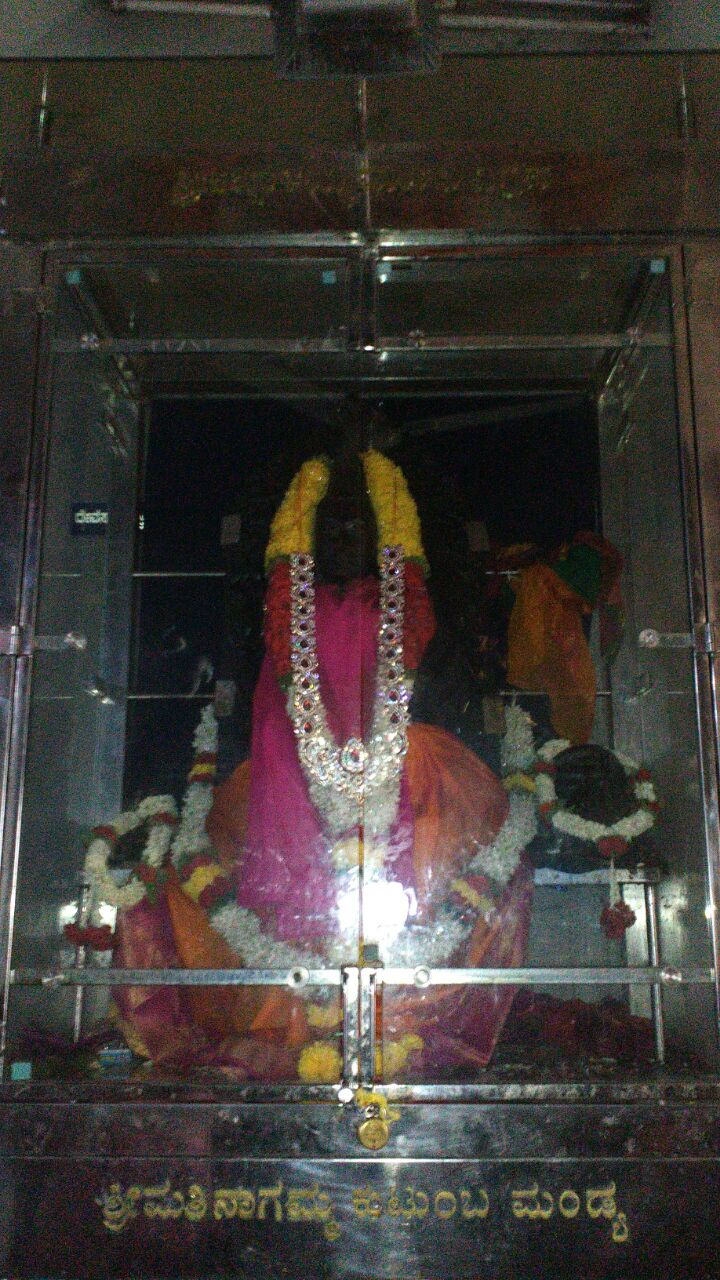
Sree Kabbalamma Idol
The old idol of Shree Kabbalamma is preserved within a glass box. It is located exactly behind the main idol.
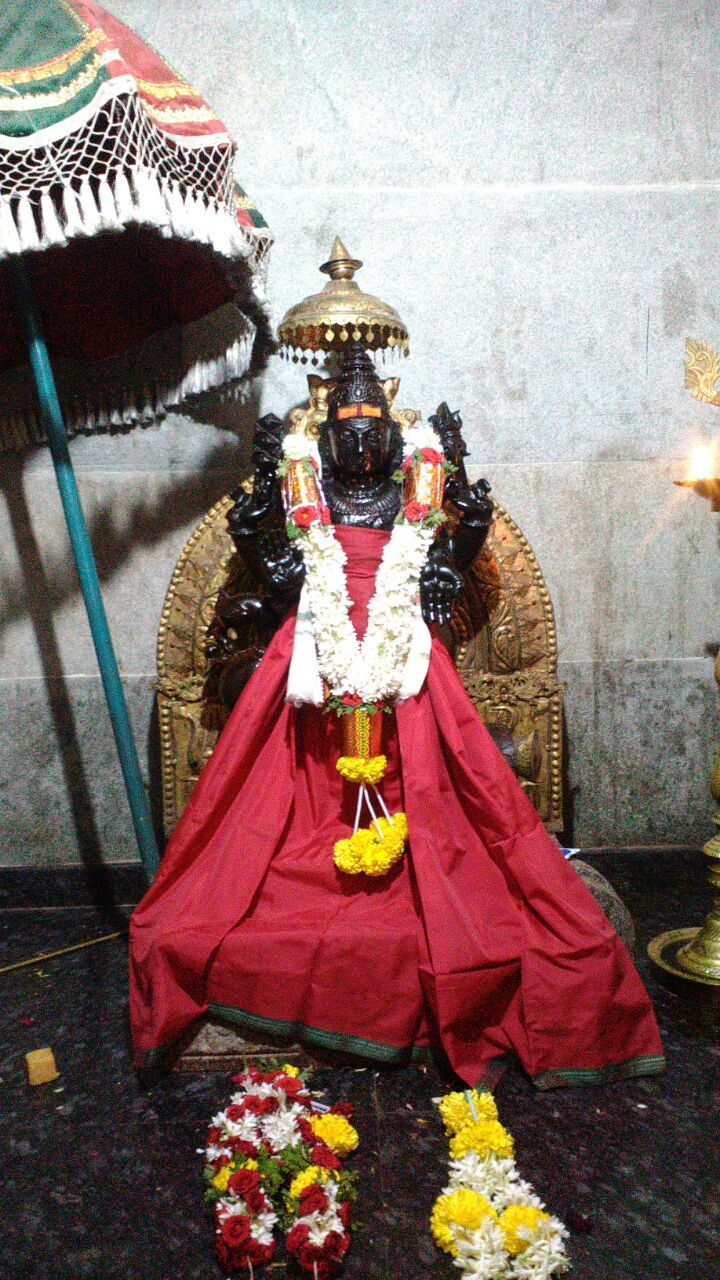
Sri Subramanya Swamy Devasthana
Sri Subramanya Swamy Devasthana is located right to Sree Kabbalamma inside the temple
PLACE
KABBALU DURGA
Every year during annual jatre thousands of pilgrims climb the Kabbalu Durga to Worship Sree Kabbalamma. Once the pilgrims is on top of the hill they can see the original temple as shown above. You can also see remaining of the fort of Kabbalu durga. There is a pond and a recently built Devara Gudi at the fareast corner of the hill.
Nandi Temple is located adjacent to Shree Kabbalamma Temple. Pilgrims can provide their prayers to Nandi.
Kabbalu-Jaatre celebrated every year on the last week of Maagha maasa,.
- Friday, 1st day of the Jaatre
- Saturday, 2nd day of the Jaatre
- Sunday, 3rd day of the Jaatre
- Monday, 4th Day of the Jaatre
- Tuesday, 5th day of the Jaatre
- Wednesday, 6th day of the Jaatre
- Thursday, 7th day of the Jaatre
- Friday, 8th day of the Jaatre
